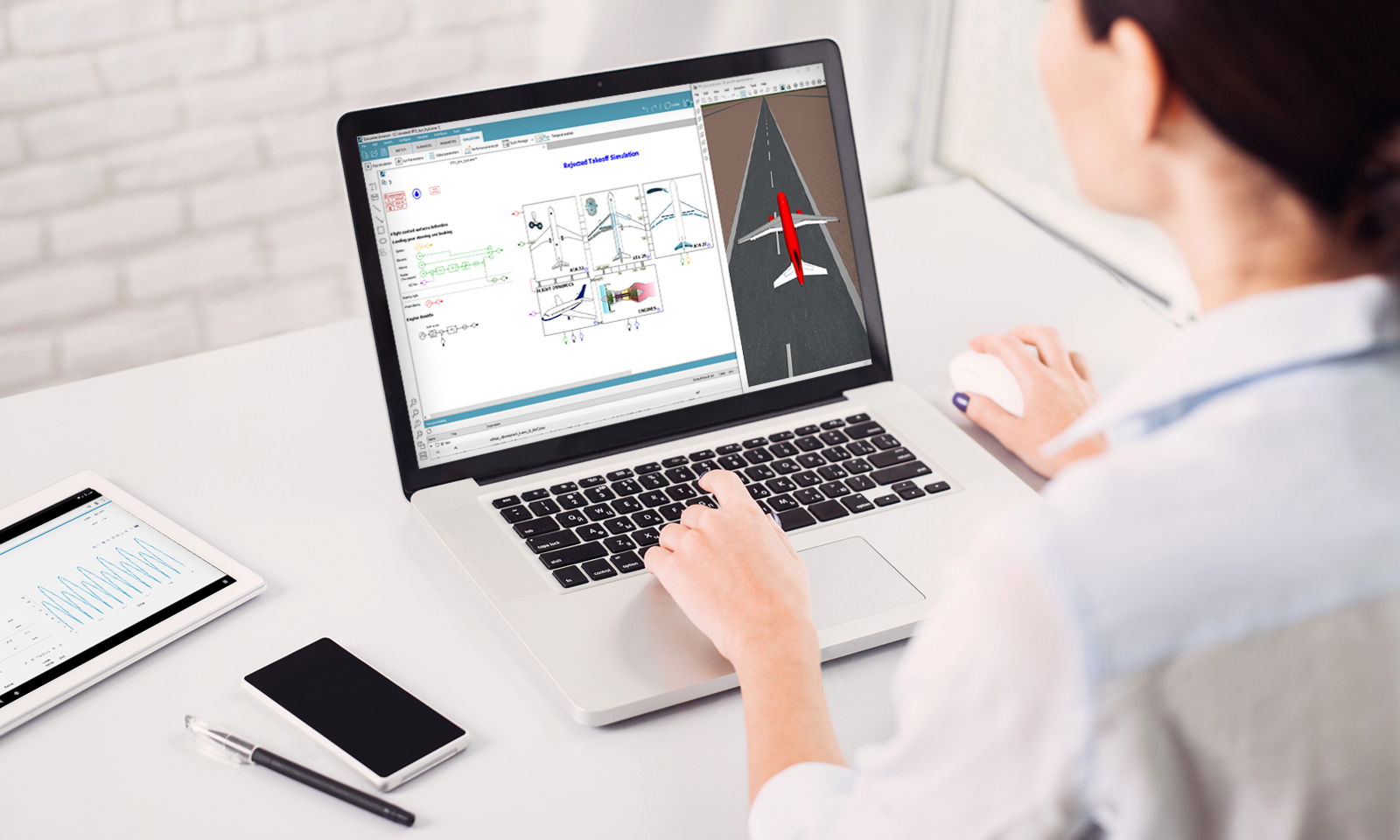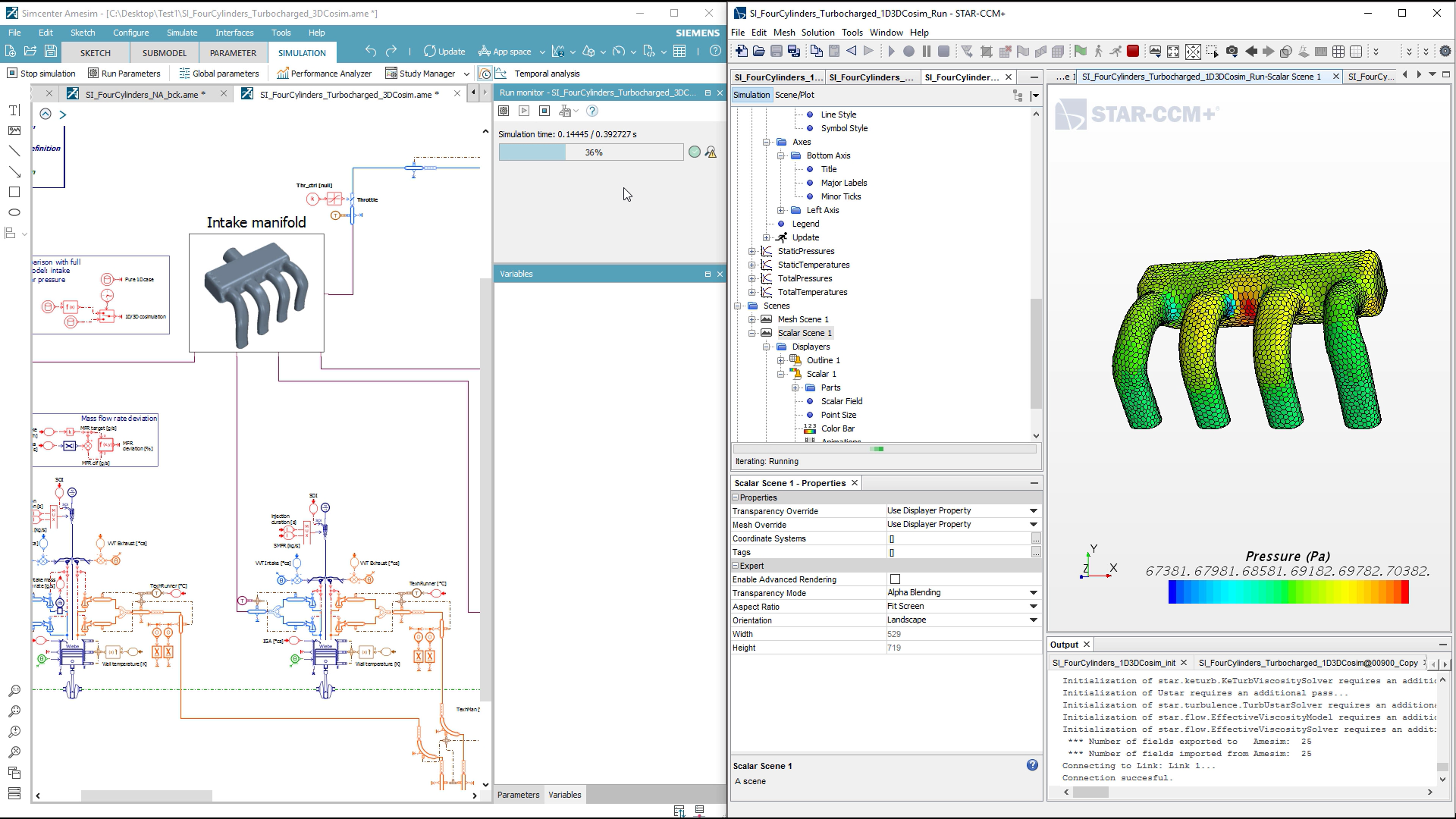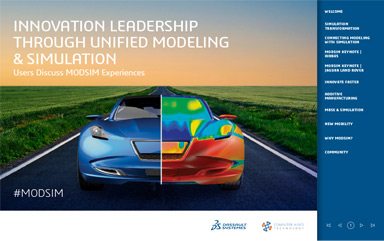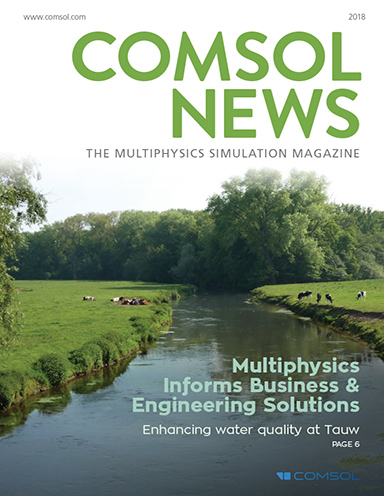
Images courtesy of Siemens PLM Software.
Latest News
October 17, 2018
Siemens PLM Software announces that version 17 of the Simcenter Amesim system simulation software is now available. The latest version brings a broad set of new capabilities that greatly increase system simulation efficiency. Siemens PLM Software continues to support innovation by enabling design engineers to create accurate digital twins faster and earlier in the development cycle.
Among many other enhancements, the latest version of Simcenter Amesim helps users:
- tackle electrification challenges, by taking advantage of ready-to-use hybrid and electric vehicle model templates;
- accelerate controls validation and calibration, by using real-time compatible components for thermal and fluid systems;
- meet pollutant emissions standards, by using the automated exhaust calibration tool;
- frontload aircraft systems performance engineering, by coupling fuel systems and flight dynamics;
- streamline design processes thanks to reinforced interoperability with other Simcenter solutions and Teamcenter; and
- expand the use of system simulation with Simcenter Webapp Server and a cloud-based version of Simcenter Amesim.
Simcenter Amesim 17: Top 5 Capabilities
Among many other enhancements, major development efforts have been put to help address key applications for electrification; controls engineering; vehicle systems and components performance engineering; aircraft systems performance engineering; and interoperability.

With the newest version, users can automatically import motor characteristics from the Simcenter SPEED electric motor design software and assess electric powertrain performance early in the development cycle.
To safeguard proper battery operating conditions, link the battery cooling system with the air conditioning system. The new brazed plate heat exchanger component helps you easily check the capability of the cooling system to manage the battery and cabin thermal operation.
Further, for electric and hybrid vehicle design, Simcenter Amesim 17 comes with ready-to-use templates to assess consumption, range, cooling and drivability. These templates provide a good starting point for vehicle electrification projects by delivering parameter consistency and detailed internal combustion engine, transmission, electric drive, battery and cabin cooling subsystems models.
Controls Engineering
There are upgraded signal bus capability and statechart management; cooling system functional components; real-time compatible components in the fluid component design libraries; and tunable parameters for FMI 2.0 export.
In the context of software-intensive products, Simcenter Amesim 17 offers new plant modeling capabilities to support controls design, validation and calibration. For instance, the signal bus feature has been reworked to optimize central processing unit (CPU) performance and the user experience. When modeling control units, you can now easily create, edit and manage supercomponents containing statecharts.
Vehicle Systems and Components Performance Engineering
Features include exhaust calibration tool including optimization features; engine manifold design study through full coupling with Simcenter STAR-CCM+; Kinematics and Compliance data generator; Cam profile definition from the valve lift; and Hypoid gear component
For conventional and hybrid vehicles, a broad set of new capabilities in Simcenter Amesim 17 will help to tackle critical challenges, such as the real driving emissions (RDE) or Worldwide harmonized Light vehicles Test Cycles (WLTC) standards. Among them, the exhaust calibration tool now enables accelerated test data import, batch processing and automated optimization of model calibration.
Aircraft Systems Performance Engineering
Look for intuitive and detailed jet engine performance analysis; fuel systems and flight dynamics coupling; fuel tank mapping from CAD; and model templates for landing gear and flap systems
In support of the aerospace and defense industry, Simcenter Amesim 17 offers unique virtual integrated aircraft (VIA) capabilities to frontload system integration, electrify propulsion systems and streamline jet engine design. It enables rapid modeling of compressors and turbines with variable geometry as well as assessing mixture composition corrections and degradation performance.
Interoperability
It features embedded Simcenter STAR-CCM+ technology for enhanced cabin air flow modeling; Ego vehicle modeling for ADAS/AD validation with Simcenter Prescan; Simcenter Amesim - Simcenter Flomaster co-simulation; model-based system testing through interoperability with Simcenter Testlab Neo software; and direct access to Teamcenter workflows in Simcenter Amesim.
To enable seamless process integration and maximize modeling accuracy, Simcenter Amesim 17 further extends synergies within the Simcenter portfolio.
For instance, a tight link with Simcenter STAR-CCM+ allows capturing internal 3D flows in the car cabin to rapidly optimize thermal comfort.
For autonomous vehicle validation, the integration with Simcenter Prescan enables you to accurately capture the ego vehicle’s behavior in terms of ride, handling and fuel economy.
Sources: Press materials received from the company.
More Siemens Digital Industries Software Coverage
For More Info
Subscribe to our FREE magazine, FREE email newsletters or both!
Latest News
About the Author
DE’s editors contribute news and new product announcements to Digital Engineering.
Press releases may be sent to them via [email protected].






